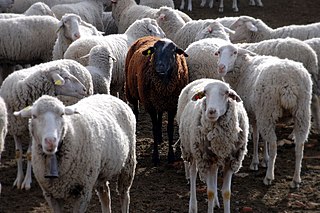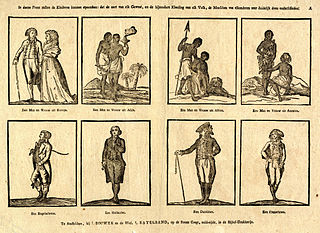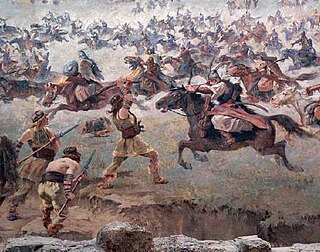It has been requested that the title of this article be changed to In-group and out-group . Please see the relevant discussion. The page should not be moved unless the discussion is closed; summarizing the consensus achieved in support of the move. |

In sociology and social psychology, an ingroup is a social group to which a person psychologically identifies as being a member. By contrast, an outgroup is a social group with which an individual does not identify. People may for example identify with their peer group, family, community, sports team, political party, gender, religion, or nation. It has been found that the psychological membership of social groups and categories is associated with a wide variety of phenomena.

Sociology is a study of society, patterns of social relationships, social interaction and culture of everyday life. It is a social science that uses various methods of empirical investigation and critical analysis to develop a body of knowledge about social order, acceptance, and change or social evolution. Sociology is also defined as the general science of society. While some sociologists conduct research that may be applied directly to social policy and welfare, others focus primarily on refining the theoretical understanding of social processes. Subject matter ranges from the micro-sociology level of individual agency and interaction to the macro level of systems and the social structure.
Social psychology is the scientific study of how people's thoughts, feelings, and behaviors are influenced by the actual, imagined or implied presence of others. In this definition, scientific refers to the empirical investigation using the scientific method. The terms thoughts, feelings, and behaviors refer to psychological variables that can be measured in humans. The statement that others' presence may be imagined or implied suggests that humans are malleable to social influences even when alone, such as when watching videos, sitting on the toilet, or quietly appreciating art. In such situations, people can be influenced to follow internalized cultural norms. Social psychologists typically explain human behavior as a result of the interaction of mental states and social situations.

In the social sciences, a social group can be defined as two or more people who interact with one another, share similar characteristics, and collectively have a sense of unity. Other theorists disagree however, and are wary of definitions which stress the importance of interdependence or objective similarity. Instead, researchers within the social identity tradition generally define it as "a group is defined in terms of those who identify themselves as members of the group". Regardless, social groups come in a myriad of sizes and varieties. For example, a society can be viewed as a large social group.
Contents
- Associated phenomena
- In-group favoritism
- Outgroup derogation
- Social influence
- Group polarization
- Group homogeneity
- Postulated role in human evolution
- See also
- References
The terminology was made popular by Henri Tajfel and colleagues during his work in formulating social identity theory. The significance of ingroup and outgroup categorization was identified using a method called the minimal group paradigm. Tajfel and colleagues found that people can form self-preferencing ingroups within a matter of minutes and that such groups can form even on the basis of completely arbitrary and invented discriminatory characteristics, such as preferences for certain paintings. [1] [2] [3] [4]

Henri Tajfel was a Polish social psychologist, best known for his pioneering work on the cognitive aspects of prejudice and social identity theory, as well as being one of the founders of the European Association of Experimental Social Psychology.
Social identity is the portion of an individual's self-concept derived from perceived membership in a relevant social group. As originally formulated by social psychologists Henri Tajfel and John Turner in the 1970s and the 1980s, social identity theory introduced the concept of a social identity as a way in which to explain intergroup behaviour.
The minimal group paradigm is a methodology employed in social psychology. Although it may be used for a variety of purposes, it is most well known as a method for investigating the minimal conditions required for discrimination to occur between groups. Experiments using this approach have revealed that even arbitrary distinctions between groups, such as preferences for certain paintings or the color of their shirts, can trigger a tendency to favor one's own group at the expense of others, even when it means sacrificing in-group gain.


